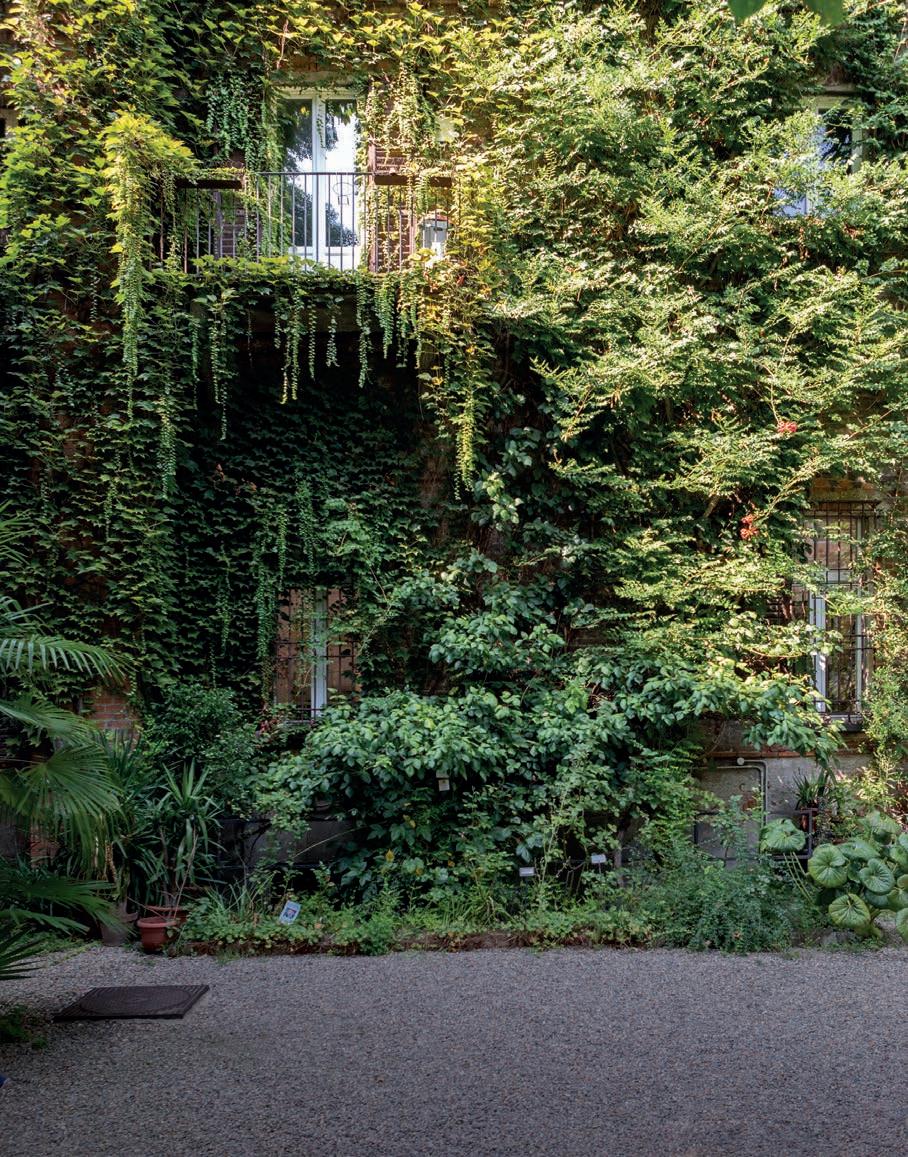
8 minute read
ITINERARIES
CITY ITINERARIES
GUASTALLA GARDEN IS ONE OF MILAN’S OLDEST PARKS IL GIARDINO DELLA GUASTALLA È UNO DEI PIÙ ANTICHI DI MILANO
19th century, architect Giuseppe Balzaretto extended the layout of the gardens as far as Palazzo Dugnani. In addition to the latter, highlights of the park are the Natural History Museum and the Ulrico Hoepli Planetarium.
VILLA BELGIOJOSO BONAPARTE GARDEN
Across Via Palestro is the magnificent Villa Reale, also known as Villa Belgiojoso Bonaparte, the home of GAM (Milan Modern Art Gallery), overlooking a beautiful garden, one
of the first examples of an English-style
garden in Milan. 24,000 enchanting square metres, with bridges and a romantic pavilion surrounded an artificial lake.
GUASTALLA GARDEN Between the Polyclinic Hospital and
University is this small Italianate garden, created at the request of Paola Ludovica Torelli, Countess Guastalla, in 1555. One of Milan’s oldest parks, it contains a delightful 18th-century fish pond populated by carp and goldfish, a neoclassical temple by Luigi Cagnola and a 17th century shrine depicting Mary Magdalene and angels.
BRERA BOTANICAL GARDENS
What was simply the garden of Palazzo Brera was transformed into a botanical garden intended for study in the second half of the 18th century by Empress Maria Theresa of Austria. In the same period, the adjacent astronomical observatory was established. Among the many plants present are two of the oldest gingko bilobas in Europe, a 40-meter-tall lime tree and a Caucasian walnut. vento di Giuseppe Balzaretto, che porta i giardini fino a Palazzo Dugnani. Insieme a quest’ultimo gli highlights del parco sono il Museo Civico di Storia Naturale e il Planetario Ulrico Hoepli.
GIARDINO DI VILLA BELGIOJOSO BONAPARTE
Attraversando via Palestro si arriva alla bellissima Villa Reale, o Villa Belgiojoso Bonaparte, sede della GAM (Galleria d’Arte Moderna Milano), che si affaccia su un meraviglioso giardino, uno dei primi esempi di giardini all’inglese di Milano. 24.000 incantevoli metri quadrati, con ponticelli e un romantico tempietto circondato da uno specchio d’acqua.
GIARDINO DELLA GUASTALLA Tra l’Ospedale Policlinico e l’Università
Statale si trova questo piccolo giardino all’italiana, voluto della contessa di Guastalla, Ludovica Torelli, nel 1555. Uno dei parchi più antichi di Milano. Deliziosa la vasca peschiera settecentesca popolata da carpe e pesci rossi, ma anche il tempio neoclassico di Luigi Cagnola e l’edicola seicentesca della Maddalena.
ORTO BOTANICO DI BRERA
La trasformazione di un semplice giardino di Palazzo Brera in orto botanico destinato allo studio è stata nella seconda metà del XVIII secolo, per volontà dell’imperatrice Maria Teresa d’Austria. Stesso periodo in cui viene istituito l’adiacente osservatorio astronomico. Tra le tante piante presenti, due dei ginko biloba più antichi d’Europa, un tiglio alto 40 metri e un noce del Caucaso.
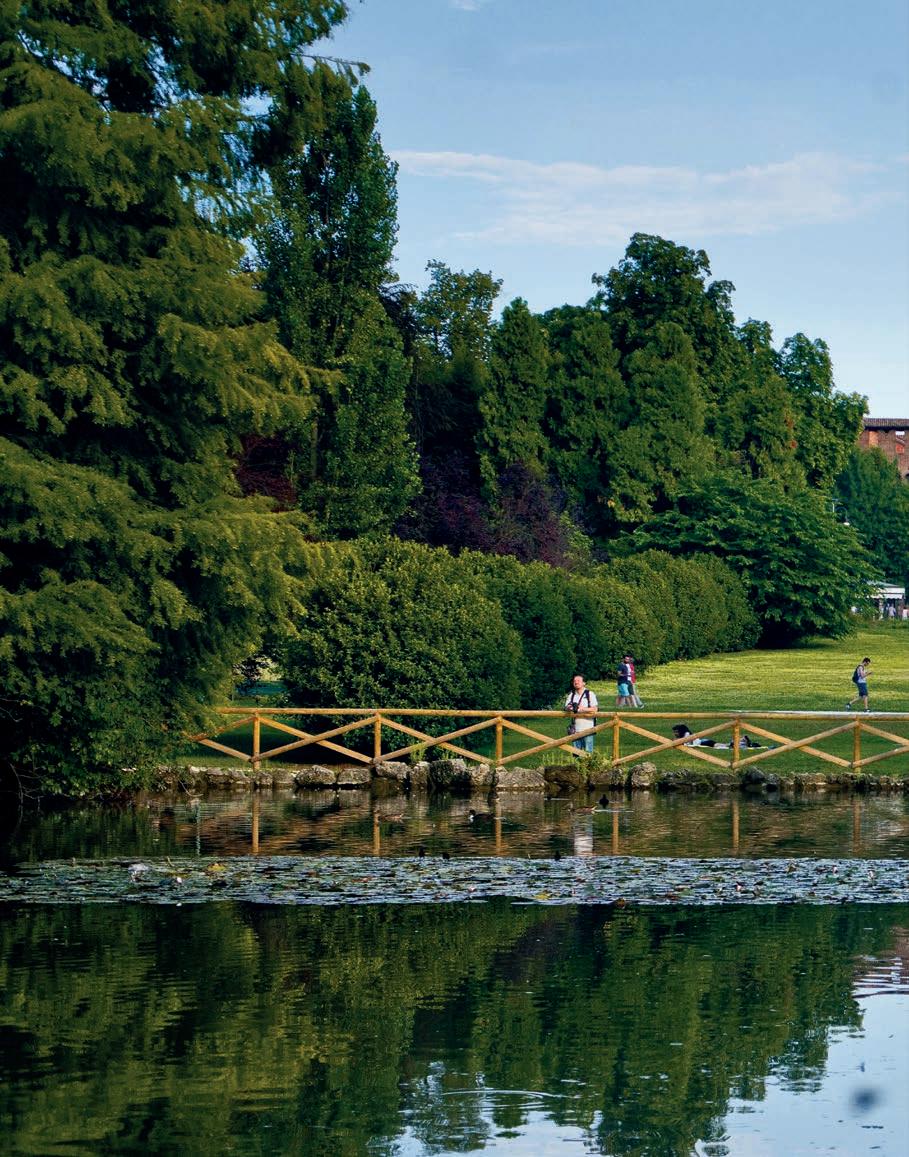
Parco Sempione with Castello Sforzesco (ph. Dario Garofalo)
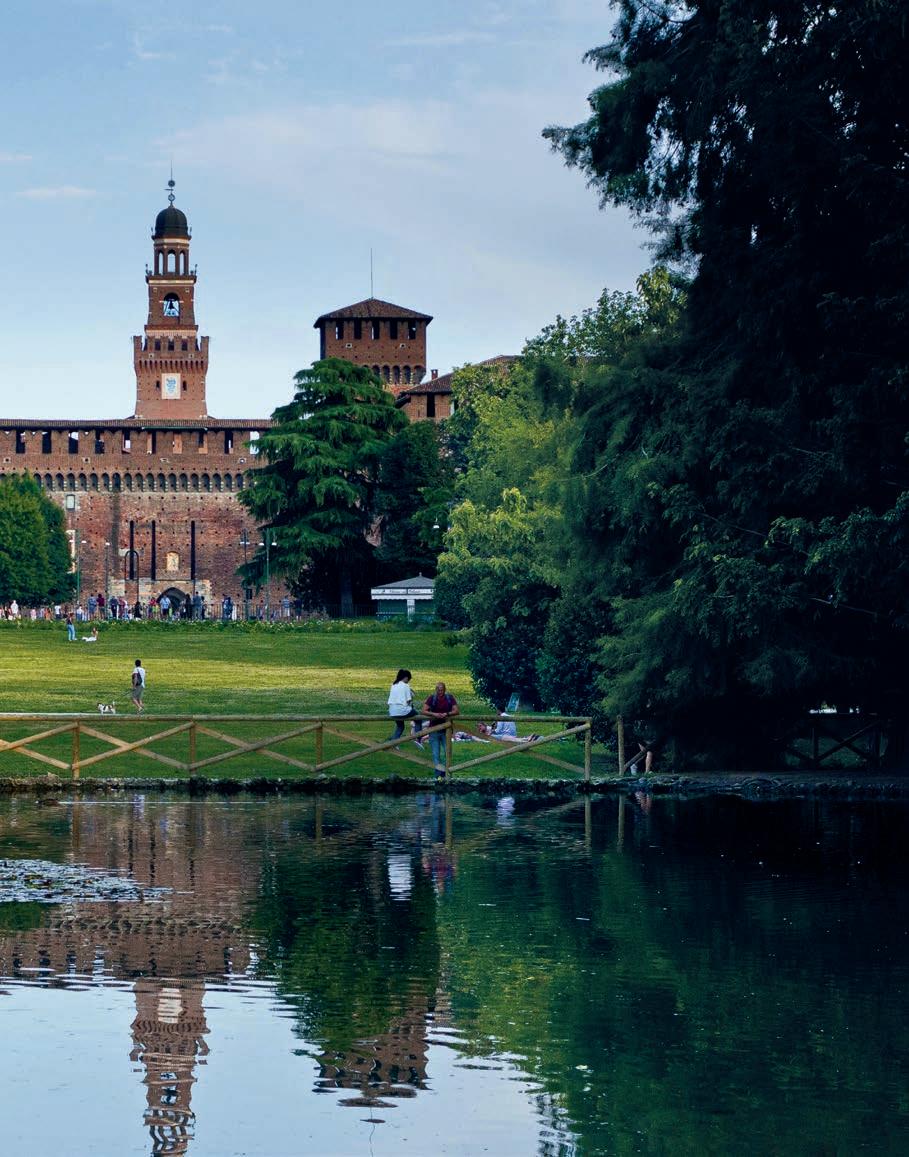
CITY ITINERARIES
PARCO SEMPIONE IS 386,000 SQUARE METRES, 22 TIMES THE SIZE OF PIAZZA DUOMO PARCO SEMPIONE SI ESTENDE PER 386.000 METRI QUADRATI, 22 VOLTE LA GRANDEZZA DI PIAZZA DUOMO
PARCO BIBLIOTECA DEGLI ALBERI DI MILANO (BAM)
A public park and also a botanical garden in the Porta Nuova-Isola area. Inaugurated in 2018, it has been described as one of Europe’s most innovative parks, and compared to a library given the organization in ‘plant rooms’ with more than 100 dif-
ferent species, 500 trees arranged in 22
rings and 135,000 plants. The fountain, with spectacular water and light effects,
is active from May to September. PARCO PAPA GIOVANNI PAOLO II (POPE JOHN PAUL II PARK) OR PARCO DELLE BASILICHE
Named after Pope John Paul II in 2000, the year of the Jubilee, it is a sort of green corridor connecting the Basilica of San Lorenzo and the Basilica of Sant’Eustorgio, more suitable for relaxing and taking a break, as Milanese students often do, than to sporting activities such as jogging. The entrance is from behind the Basilica of San Lorenzo, with its spectacular apse that acts as a stunning backdrop. Designed by architects Bagatti Valsecchi and Grandi, it was conceived as an archaeological walk between the two basilicas, the columns of San Lorenzo and the ruins of the Roman amphitheatre on Corso di Porta Ticinese.
MONTE STELLA PARK
Called “the Montagnetta di San Siro” by the Milanese, it is an artificial 50-metre high hill, the work of architect Piero Bottoni, who on the occasion of the VIII Triennale in 1947, had the idea of converting
PARCO BIBLIOTECA DEGLI ALBERI DI MILANO (BAM)
Parco pubblico e contemporaneo giardino botanico in zona Porta Nuova-Isola. Inaugurato nel 2018, è stato descritto come uno dei parchi più innovativi d’Europa, paragonato a una biblioteca data l’organizzazione in ‘stanze vegetali’ con più di 100 specie diverse, 500 alberi disposti in 22 anelli e 135.000 piante. Scenografica anche la fontana con giochi d’acqua e luce attiva da maggio a settembre.
PARCO PAPA GIOVANNI PAOLO II O PARCO DELLE BASILICHE
Intitolato a Papa Giovanni Paolo II nel 2000, anno del Giubileo, è una sorta di corridoio verde che collega la basilica
di San Lorenzo e la basilica di Sant’Eu-
storgio, più adatto al relax e a una pausa, come fanno spesso gli studenti milanesi, che a attività sportive come il jogging. Suggestivo l’ingresso da dietro la basilica di San Lorenzo, con la sua affascinante abside che fa da incredibile quinta. Il progetto è degli architetti Bagatti Valsecchi e Grandi, che lo pensarono come una passeggiata archeologica tra le due basiliche, le colonne di San Lorenzo e i ruderi dell’anfiteatro romano su corso di Porta Ticinese.
PARCO MONTE STELLA
Chiamata dai milanesi “la Montagnetta di San Siro”, è un piccolo monte artificiale di 50 metri dovuto all’intervento dell’architetto Piero Bottoni che nel 1947, in occasione della VIII Triennale, ebbe l’idea di convertire in una collinetta l’accumu-
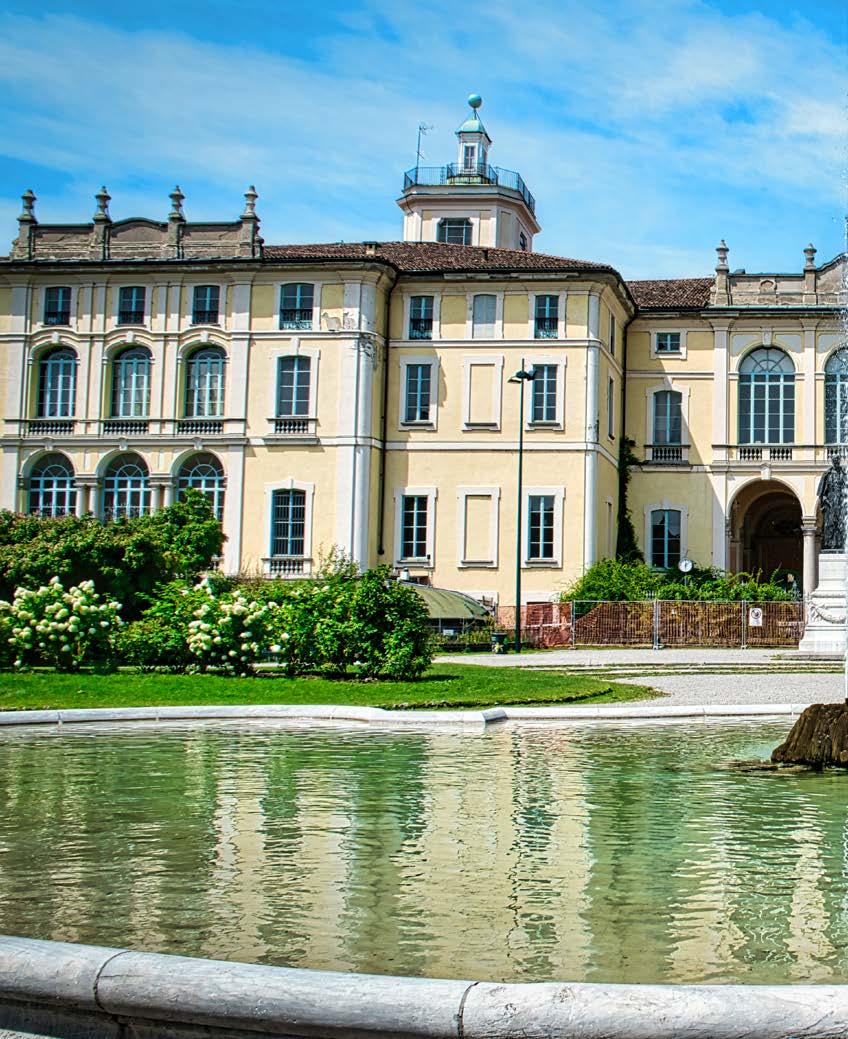
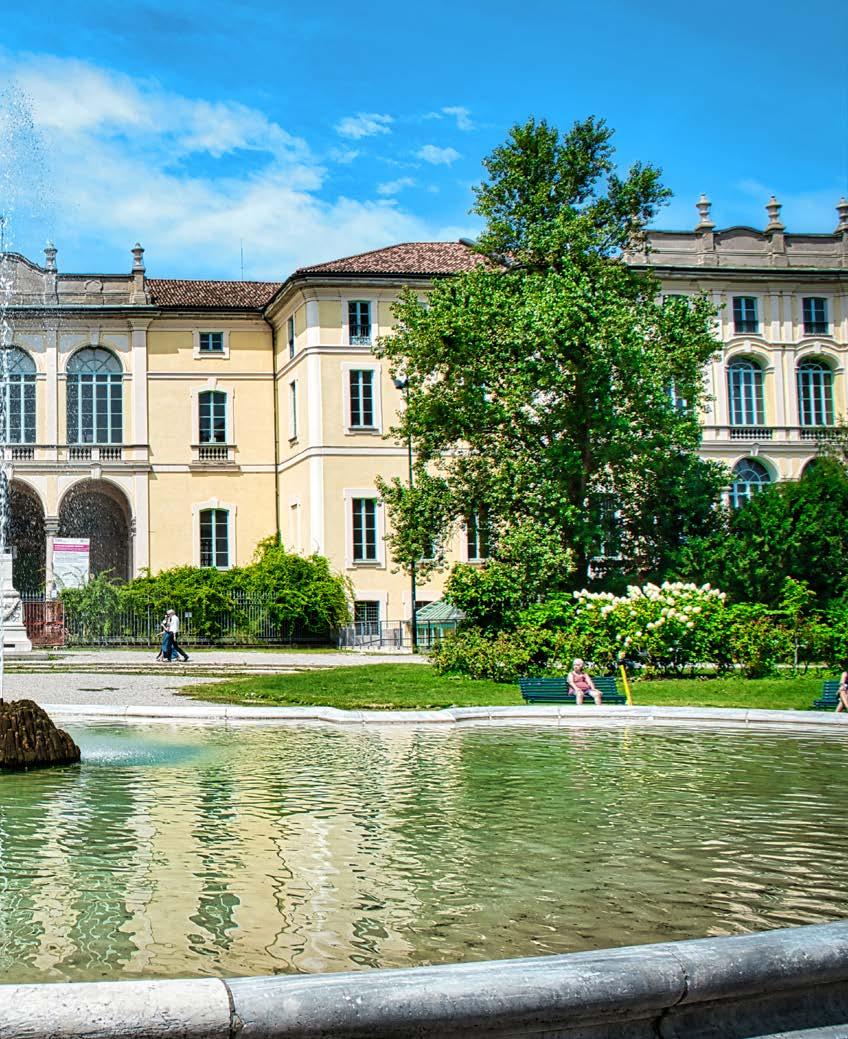
Among the many plants present in Brera Botanical Gardens are two of the oldest gingko bilobas in Europe, a 40-meter-tall lime tree and a Caucasian walnut (ph. Giulio Boem)


Above: Parco Industria Alfa Romeo Below: Villa Reale in Villa Belgiojoso Bonaparte Garden (ph. Dario Garofalo)

CITY ITINERARIES
BAM HAS BEEN DESCRIBED AS ONE OF EUROPE’S MOST INNOVATIVE PARKS BAM È STATO DESCRITTO COME UNO DEI PARCHI PIÙ INNOVATIVI D’EUROPA
the accumulation of debris from the ruins of buildings bombed during the war into a hill. Taking a walk or playing sports there is an opportunity to admire a great view
of the city. PARCO INDUSTRIA ALFA ROMEO OR PARCO DEL PORTELLO
Designed as an extension of the adjacent Monte Stella, it was the result of redevelopment of the former Alfa Romeo factory in Milan. It is made up of 3 soft ‘organic sculptures’: the sinuous S-shaped hill that surrounds a small lake and symbolizes Prehistory, the crescent-shaped hill that represents History, and the most imposing hill, that of the Present. All three are connected by a system of paths at different heights called the Time Walk.
BOSCOINCITTÀ AND PARCO NORD
Lastly, we take you to two parks that are absolutely not be missed by those who love to be surrounded by unspoiled nature, both unexpectedly not far from the city centre. The first, Boscoincittà, is near San Siro - 110 hectares of woods,
clearings, paths, streams, urban gardens,
and at its heart, the 15th-century San Romano farmhouse. The second, Parco Nord, is a huge 640-hectare park (main entrances Viale Fulvio Testi, Viale Enrico Fermi and Via Giancarlo Clerici in Sesto San Giovanni), where in addition to many species of trees and plants it is not difficult to come across various animals such as squirrels and red foxes. Night walks in summer surrounded by fireflies are an enchanting experience. lo di materiali provenienti dalle macerie dei palazzi bombardati durante la guerra. Farci una passeggiata o dello sport è l’occasione per ammirare una bellissima vista sulla città.
PARCO INDUSTRIA ALFA ROMEO O PARCO DEL PORTELLO
Progettato come un prolungamento dell’adiacente Monte Stella, nasce dall’intervento di riqualificazione dall’ex stabilimento Alfa Romeo di Milano. È composto da 3 morbide ‘sculture organiche’: la sinuosa collina a esse che avvolge un piccolo laghetto e che simboleggia la Preistoria, la collina a mezzaluna che rappresenta la Storia, e la collina più imponente, quella del Presente. Il tutto collegato da un sistema di percorsi a quote differenti denominato Time Walk.
BOSCOINCITTÀ E PARCO NORD
Vi portiamo infine nei due parchi assolutamente da visitare per chi ama immergersi nella natura più incontaminata, entrambi inaspettatamente non troppo distanti dal centro. Il primo, il Boscoincittà, è vicino San Siro: 110 ettari di boschi,
radure, sentieri, corsi d’acqua, orti urba-
ni e nel cuore la quattrocentesca cascina San Romano. Il secondo, il Parco Nord, è un gigantesco parco di 640 ettari (ingressi principali viale Fulvio Testi, viale Enrico Fermi e via Giancarlo Clerici a Sesto San Giovanni), dove oltre a moltissime specie di alberi e piante non è difficile imbattersi in diversi animali come anche scoiattoli e volpi rosse. Suggestive d’estate le passeggiate notturne costellate di lucciole.

Giovanni Gastel (ph. Andrea Colzani)

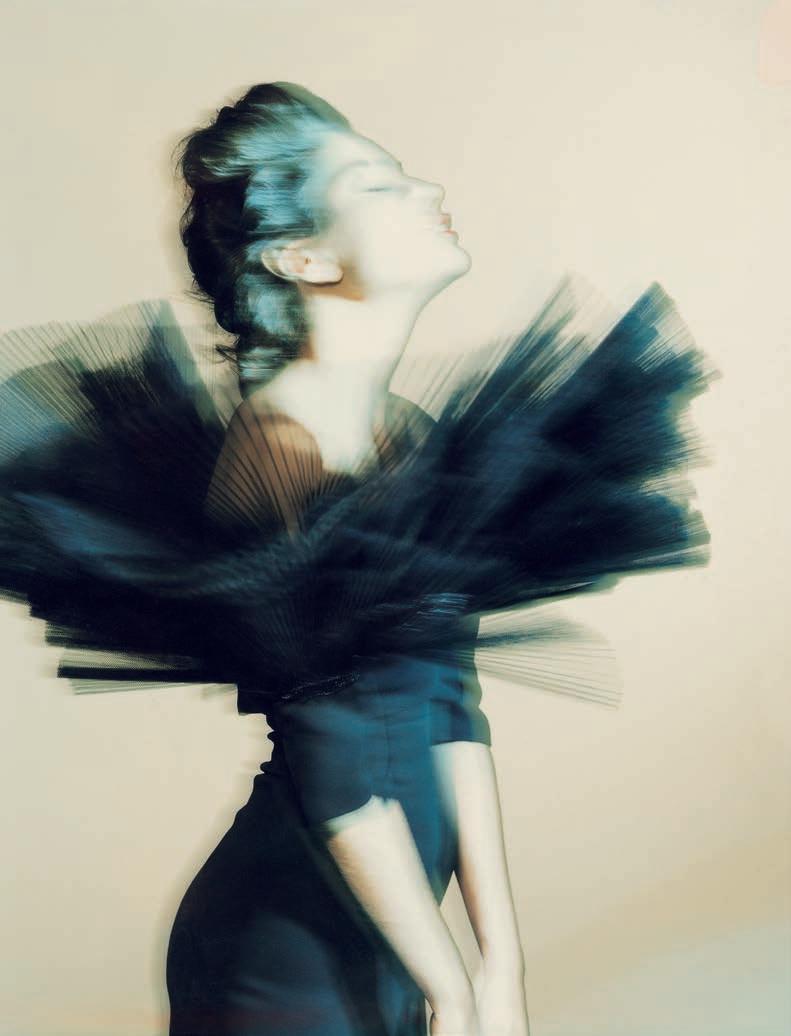
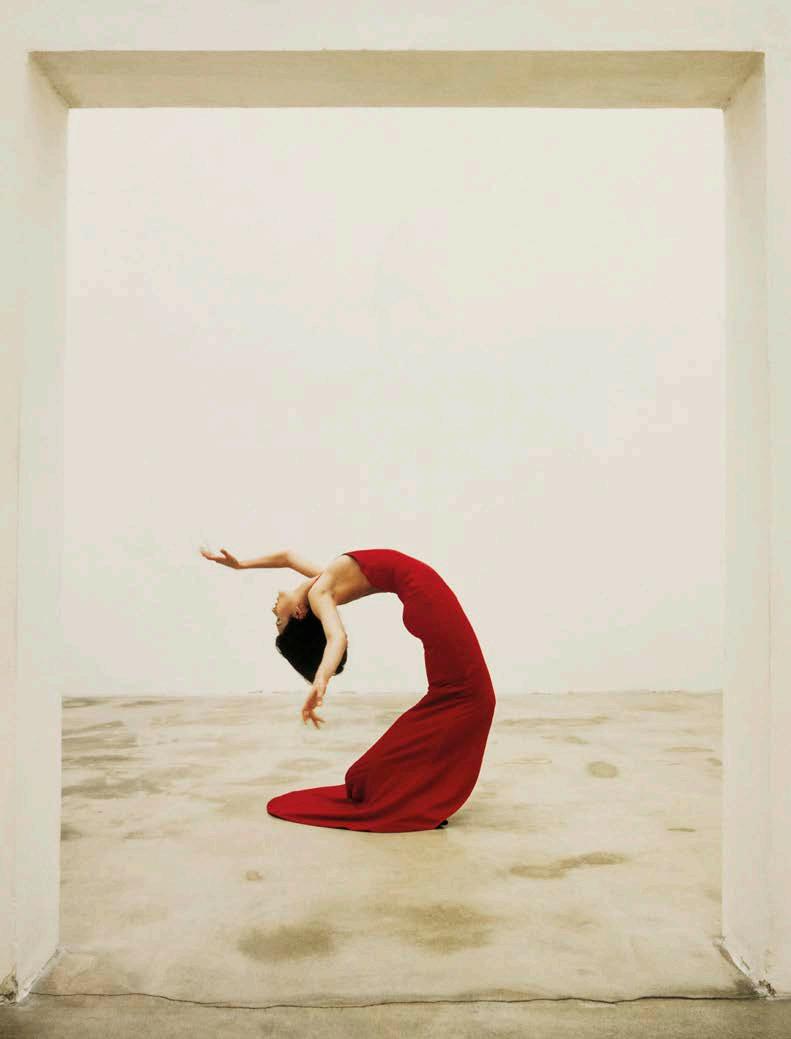
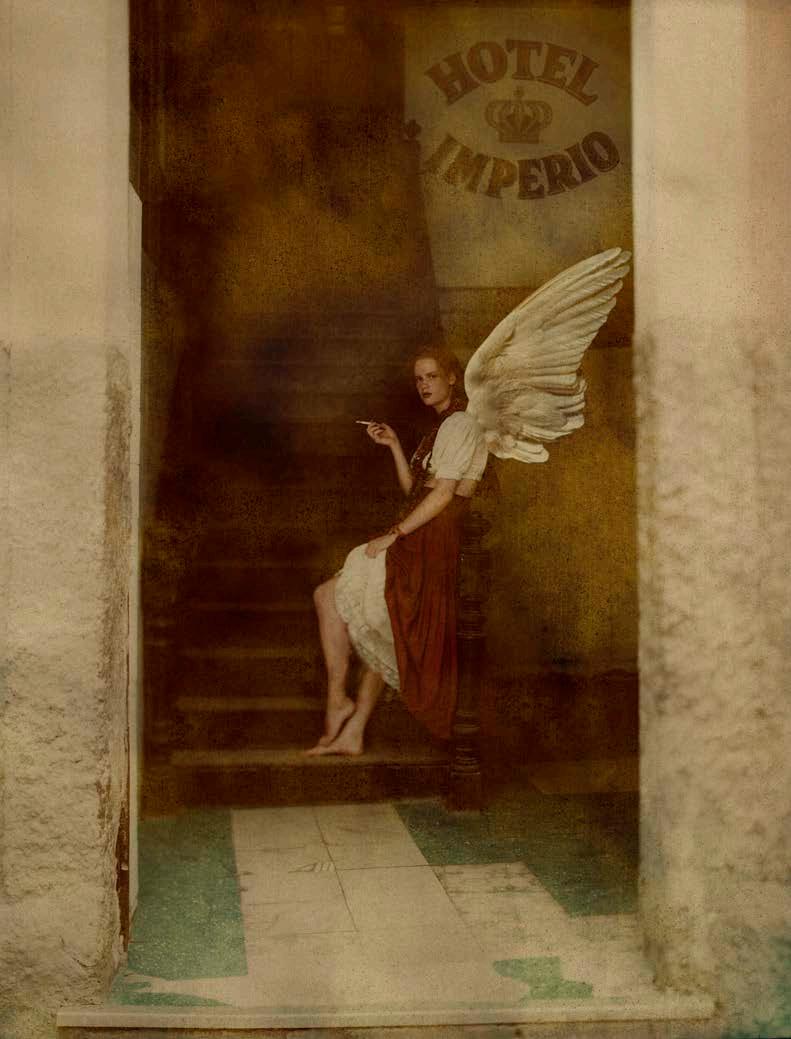


Associazione Salumi e Vini Naturali










